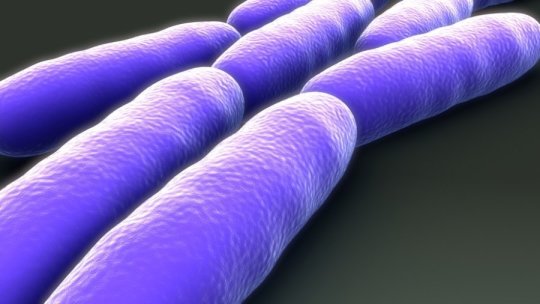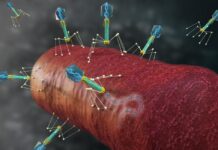[ad_1]
University of Copenhagen researchers have discovered a surprising tactic of pathogenic bacteria when being attacked by antibiotics: hibernation.
Almost all pathogenic bacteria develop a small number of antibiotic-tolerant variants. This means that a significant fraction of bacteria survive courses of antibiotics.
While it is no secret that pathogenic bacteria are able to develop antibiotic resistant variants, a less well-appreciated fact is that a small number of bacteria, including some of nature’s nastiest pathogens, can resist antibiotics and escape antibiotic treatments without relying on variants.
How’s that? Researchers at the University of Copenhagen now have an answer. They have found examples of a small portion of pathogenic bacteria hiding out in a dormant, hibernation-like state, until the danger posed to them by antibiotics passes. When safe, they awaken and resume their regular functions.
“We studied E. coli bacteria from urinary tract infections that had been treated with antibiotics and were supposedly under control. In time, the bacteria re-awoke and began to spread once again,” explains Professor Kenn Gerdes of the University of Copenhagen’s Department of Biology.
The study, led by Professor Gerdes of UCPH, and Boris Macek of the University of Tübingen, has just been published in the latest edition of the journal Science Signaling.
The bacterium’s stop growth mechanism
Antibiotics usually target a bacteria cell’s ability to grow, which means that a hibernating bacterium is exempt from attack.
“A bacterium in hibernation is not resistant. It is temporarily tolerant because it stops growing, which allows it to survive the effects of an antibiotic,” says Professor Gerdes.
Genetically, hibernating bacteria share the same characteristics as other bacteria in a given population, an E. coli population for example. So, for now, there are no clear rules as to why certain bacteria survive antibiotics by going dormant while others do not.
The researchers used a new method to study what happens in the disease-causing cells that go dormant and hide in the body.
Enzyme catalyzes hibernation
The researchers found an enzyme in dormant bacteria that is responsible for catalyzing hibernation, which allows the bacteria to avoid being attacked.
“The discovery of this enzyme is a good foundation for the future development of a substance capable of combatting dormant bacteria cells,” says Professor Gerdes.
The road ahead will not be easy and will require many years of hard work, expertise and research funding to develop new antibiotics. For Gerdes, it obvious that Denmark ought to play a leading role in this area of research.
“The enzyme triggers a ‘survival program’ that almost all disease-causing bacteria deploy to survive in the wild and resist antibiotics in the body. Developing an antibiotic that targets this general programme would be a major advance,” he says.
[ad_2]















